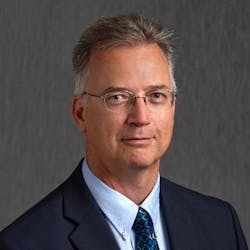Industrial Insulation: Six Questions with Owens Corning's Doug Fast
As the second half of 2021 began, Owens Corning's Mechanical Solutions newsletter spoke with Doug Fast, P.E., senior engineering lead for Owens Corning's Industrial Mineral Wool product portfolio, about acoustic modeling, as well as insights from a new white paper comparing calcium silicate to mineral wool, and the ongoing role of insulation in promoting efficient energy use.
++++++++++
1. What are some new initiatives underway in industrial insulation?
This summer, Owens Corning is sharing results from new data that informed expanded acoustic modeling. We conducted over 30 acoustic tests that generated a huge amount of data and thought, "Why not use this data to create a model that will help inform a configuration in situations that don’t comply with any of our listed models?” We are making the models available for Thermafiber® mineral wool systems, as well as combination systems with both Thermafiber® mineral wool and FOAMGLAS® cellular glass insulations.
The acoustic modeling includes solutions for small, medium, and large pipes. Previously, we had limited data for large-size pipes. Leveraging the data from the mid-size pipe, the model’s capability was expanded to include large-diameter pipes. Additional testing of the large-diameter pipe validated the performance of the model.
2. How will this modeling data be shared with the industry?
Owens Corning’s Principal Acoustic Scientist, Kevin Herreman, presented a summary of the data we collected to the Acoustical Society of America. He is also sharing the findings with the International Institute of Noise Control Engineering, discussing how Owens Corning applied the models to large diameter pipe configurations. This research started in 2019 and we’re excited about wrapping up the findings and sharing the outcomes with the industry.
3. What other technical resources is Owens Corning introducing based on testing?
We wrote a Calcium Silicate vs. Mineral Wool white paper that our mechanical sales team will be using in presentations. The testing compared five performance attributes: thermal, acoustics, water repellency, durability and protection against corrosion under insulation (CUI). We also produced an online video that demonstrates the low water absorption and high temperature resistance of mineral wool compared to calcium silicate.
4. What were some key insights from the testing?
We have always known that calcium silicate has the potential to be a brittle material which presents handling challenges. Anecdotally, we’ve seen that the edges of calcium silicate chipped, reducing the tightness of the fitting and creating conditions for cracks to appear in piping joints. In testing, we put two layers of mineral wool insulation on a piping assembly and then compared the same thickness of calcium silicate on an assembly. An infrared camera clearly shows that a lot more heat – nearly 20 degrees – is able to come through the calcium silicate.
- Last November, Fast reflected here on Industrial Processes in a Year of Extremes.
Beyond the thermal benefits, the testing also showed that the brittle nature of calcium silicate did not deliver the same resilience and durability as mineral wool. And while the brittleness of calcium silicate shows up in results from a limited timed testing application, in the real world we should also consider how this material’s brittle nature may fracture and cause challenges over the life of the system. We also compared the water repellency of domestically produced calcium silicate to Owens Corning’s Thermafiber® Pro Section WR Pipe Insulation. Results showed that calcium silicate absorbed over 300% of its weight in water while mineral wool pipe sections showed just 11% water absorption. Since Thermafiber® Pro Section WR repels water, less water gets into the system. If water does get into the system, it will dry much faster than the more absorptive calcium silicate.
5. How did the pandemic influence education and training internally and externally at Owens Corning?
In 2020, when we went under lockdown, education and training efforts went into overdrive. Our mechanical sales team that works with contractors and distributors engaged in more learning on industrial processes. We invited in guest speakers to present on topics ranging from removable covers to estimating software and contractors’ perspectives on the business of insulation. Externally, we also received requests from customers and distributors for educational content, which led to webinars on acoustics, and overviews of fiberglass and mineral wool insulation. Customers also requested presentations on insulation applications for specific industries. A curated assortment of content-rich Owens Corning video and training resources is available here.
6. How is sustainability influencing the industrial insulation business?
In the insulation sector, we’re always looking for opportunities to reduce energy. One interesting evolution in the market is the ongoing trend we’re seeing away from coal to combined cycle natural gas to fuel power plants. While most people know combined cycle natural gas has lower CO2 emissions, there are other energy-efficient benefits to combined cycling. For example, after the natural gas is processed by the turbine to generate energy, heat exchangers capture some of the heat exhaust and use it to power other turbines. In this manner, the efficiency of the power plant can show improvement. This approach simply isn’t possible with coal given the particulates it contains and resulting pollution that would be emitted into the air. Natural gas allows the production of more electricity per unit of energy, driving improved energy efficiency. It’s really a win/win which is why we’re seeing power plants be built with natural gas and retrofitting of existing infrastructure to take advantage of the efficiencies.
##########

